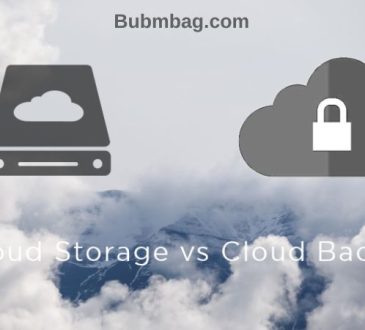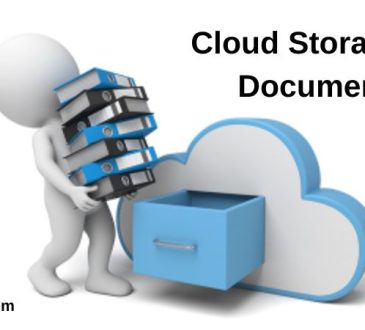Understanding the Mechanics: How Cloud Storage Works

In our contemporary digital landscape, the significance of data as a linchpin for businesses and individuals alike cannot be overstated. From critical documents to cherished memories encapsulated in multimedia files, the necessity for dependable storage solutions has soared. Amidst this backdrop, cloud storage emerges as a transformative technology, reshaping the paradigms of data storage, accessibility, and management. But delving deeper, one might ponder: how cloud storage works exactly? Let Bubmbag embark on an expedition into the labyrinthine complexities that underpin this modern marvel.
Contents
How Cloud Storage Works
Data Upload:
At the nucleus of cloud storage lies the pivotal process of data upload. Herein, users initiate the seamless transfer of their multifaceted files, documents, and media to remote servers via the conduit of an internet connection. Whether facilitated through a web browser, dedicated application, or automated workflow, the cardinal objective remains steadfast – the transference of data to the cloud. This seminal step serves as the cornerstone upon which the subsequent mechanisms governing the functioning of cloud storage are erected.
Data Encryption:
Subsequent to the upload phase, the data undergoes a cryptographic metamorphosis, wherein encryption protocols are employed to fortify its confidentiality and integrity. Encryption stands as an impregnable bastion, rendering the data impervious to prying eyes during its traversal through the digital ether and while at rest within the confines of the servers. Diverse encryption methodologies may be harnessed by cloud storage providers, yet the overarching aim remains unswerving – the fortification of data security.
Storage on Servers:
Post-encryption, the data finds sanctuary on remote servers meticulously overseen by the cloud storage provider. These servers, ensconced within fortified data centers, serve as the bedrock of the cloud storage infrastructure. Endowed with state-of-the-art hardware and software, these servers proffer a haven wherein data is methodically archived, cataloged, and accessed with consummate efficiency. As users perpetuate the influx of data, these servers metamorphose into repositories housing an inexorable trove of invaluable information, attainable from any corner of the globe endowed with an internet umbilical.
Redundancy and Replication:
Safeguarding the longevity and accessibility of stored data constitutes a sine qua non within the realm of cloud storage. To achieve this sacrosanct objective, providers implement an array of redundancy and replication strategies. Redundancy entails the dissemination of multiple iterations of data across disparate servers or data centers, thereby mitigating the specter of data loss occasioned by hardware malfunctions or exigent circumstances. Meanwhile, replication engenders the generation of additional replicas of data dispersed across geographically divergent locales, thereby auguring heightened resilience and accessibility.
Access and Retrieval:
A hallmark feature intrinsic to cloud storage is its unparalleled accessibility. Users wield the prerogative to summon forth their archived data from any device ensconced within the digital domain, tethered to the internet’s omnipresent tendrils. Whether perusing documents on a desktop, appraising photographs on a handheld device, or indulging in the cinematic reverie of videos on a tablet, the cloud furnishes a panoptic vista wherein such vicissitudes are rendered plausible. Authentication stratagems, ranging from traditional passwords to multifaceted biometric modalities, serve as sentinels, delineating the precincts of data accessibility to authorized denizens alone.
Scalability:
Ingrained within the fabric of cloud storage solutions is a paradigm of scalability that transcends conventional constraints. As the expanse of data burgeons or contracts, providers evince the capacity to apportion additional resources such as storage capacity and bandwidth commensurate with the exigencies of burgeoning demand. This elastic scalability obviates the necessity for precipitous capital outlays or labyrinthine infrastructure upgrades, endowing businesses and individuals with the latitude to modulate their storage requisites sans encumbrance.
Data Backup and Disaster Recovery:
Within the expanse of cloud storage, the conduits of data backup and disaster recovery serve as indomitable bulwarks fortifying the edifice of data management. Providers proffer an array of bespoke features tailored to stymie the specter of data loss, including recurrent backups, episodic snapshots, versioning, and replication unto sanctuaries ensconced within redundant bastions. These panoplies of precautionary measures manifest as an impenetrable shield, enshrouding precious data from the vicissitudes of inadvertent erasure, malevolent malfeasance, or cataclysmic conflagrations.
Service Level Agreements (SLAs):
Cloud storage purveyors, cognizant of the import vested in their services, oft promulgate a litany of service level agreements (SLAs) delineating the contours of their offerings. These compacts serve as veritable codifications, stipulating the terms and conditions germane to uptime guarantees, cryptographic fortifications, ancillary support frameworks, and veritable bulwarks shielding the sanctity of data. By endowing these covenants with formal imprimaturs, providers furnish users with an edifice predicated upon trust and accountability, engendering an ethos of reciprocal fidelity.
Conclusion:
In summation, “how cloud storage works” epitomizes a seismic shift in the modality of data storage, access, and management in the contemporary epoch. Through a mosaic of intricately interwoven processes, data is ushered into the ethereal confines of the cloud, wherein it finds sanctuary amidst the labyrinthine corridors of remote servers. Embraced within the embrace of redundancy, replication, and resilience, cloud storage proffers a vista wherein data assumes the mantle of omnipresence, attainable from any locus endowed with an internet’s embrace. In deciphering the mechanics that animate cloud storage, a vista of boundless possibilities is unveiled, where the tenets of security, accessibility, and scalability converge to forge a symbiotic nexus propelling us towards the apogee of data management prowess.






